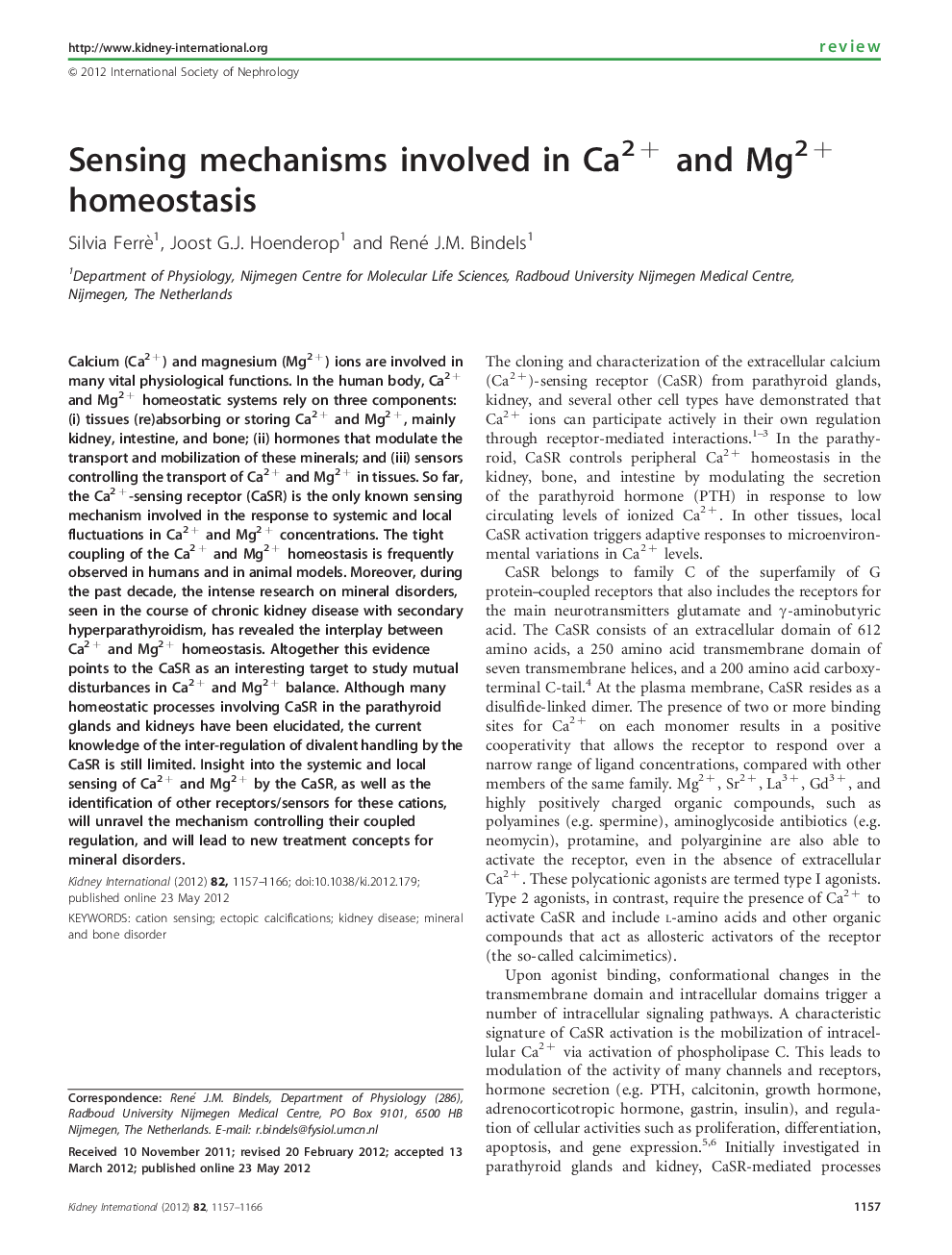| Article ID | Journal | Published Year | Pages | File Type |
|---|---|---|---|---|
| 6162910 | Kidney International | 2017 | 10 Pages |
Abstract
Calcium (Ca2+) and magnesium (Mg2+) ions are involved in many vital physiological functions. In the human body, Ca2+ and Mg2+ homeostatic systems rely on three components: (i) tissues (re)absorbing or storing Ca2+ and Mg2+, mainly kidney, intestine, and bone; (ii) hormones that modulate the transport and mobilization of these minerals; and (iii) sensors controlling the transport of Ca2+ and Mg2+ in tissues. So far, the Ca2+-sensing receptor (CaSR) is the only known sensing mechanism involved in the response to systemic and local fluctuations in Ca2+ and Mg2+ concentrations. The tight coupling of the Ca2+ and Mg2+ homeostasis is frequently observed in humans and in animal models. Moreover, during the past decade, the intense research on mineral disorders, seen in the course of chronic kidney disease with secondary hyperparathyroidism, has revealed the interplay between Ca2+ and Mg2+ homeostasis. Altogether this evidence points to the CaSR as an interesting target to study mutual disturbances in Ca2+ and Mg2+ balance. Although many homeostatic processes involving CaSR in the parathyroid glands and kidneys have been elucidated, the current knowledge of the inter-regulation of divalent handling by the CaSR is still limited. Insight into the systemic and local sensing of Ca2+ and Mg2+ by the CaSR, as well as the identification of other receptors/sensors for these cations, will unravel the mechanism controlling their coupled regulation, and will lead to new treatment concepts for mineral disorders.
Related Topics
Health Sciences
Medicine and Dentistry
Nephrology
Authors
Silvia Ferrè, Joost G.J. Hoenderop, René J.M. Bindels,
